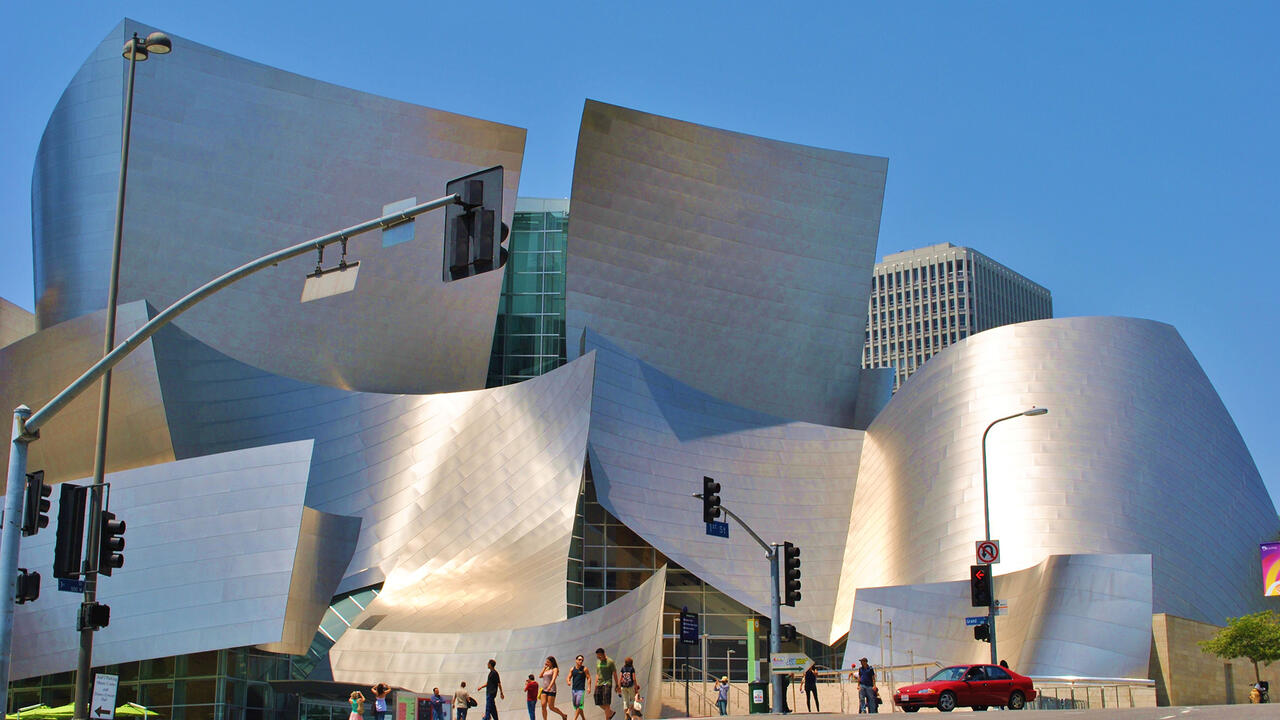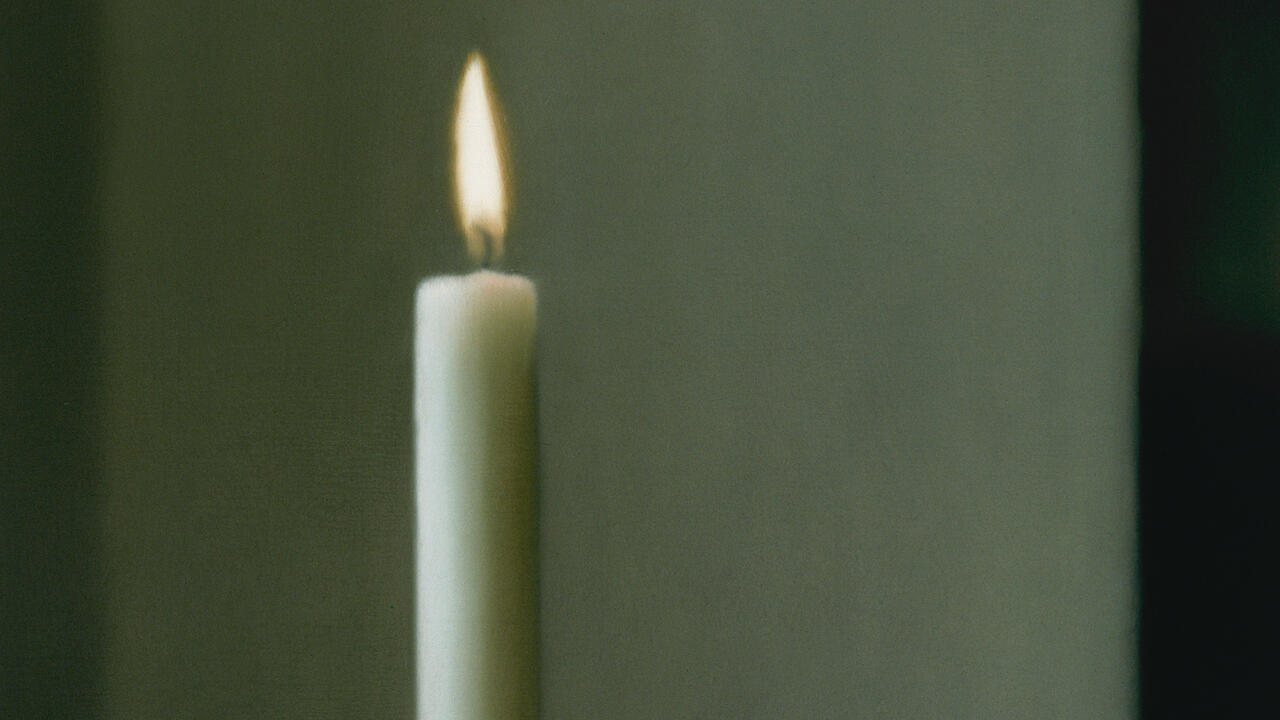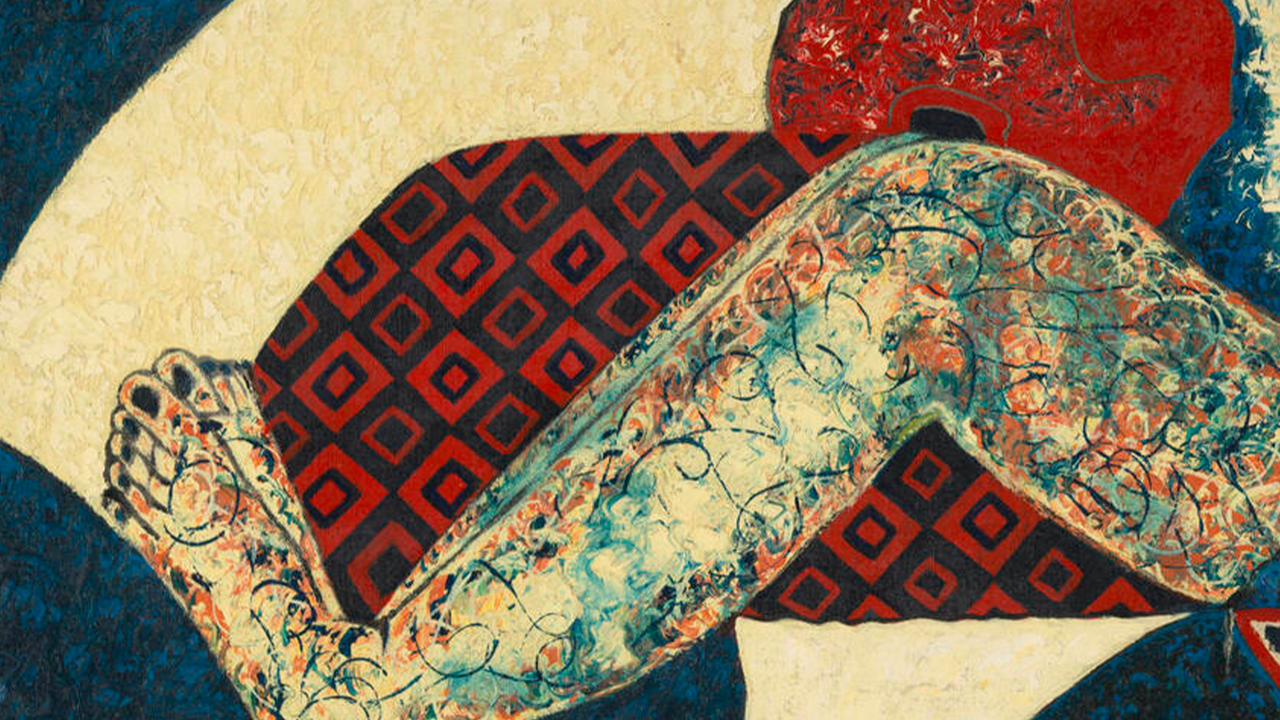Accrochage 3: Pop & Music/Sound
Fondation Louis Vuitton, Paris, France
Fondation Louis Vuitton, Paris, France

Since opening its doors last October, the Fondation Louis Vuitton has been unveiling its impressive collection of modern and contemporary works through a series of themed hangs, from the ‘contemplative’ to the ‘expressive’. With this third presentation, 26 artists are brought together under the twin axes ‘music/sound’ and ‘pop’ with results that are at once spectacular and a little overwhelming. Like the Frank Gehry-designed great glass beetle housing it all, there are no intimate gestures or small deeds here. Everything sets out to wow you from a great height.
The cherry on this towering pièce montée must surely be Cerith Wyn Evans’s A=F=L=O=A=T (2014). This vast sculpture, specially commissioned for the building, consists of a kraken-like spiral of tentacular glass flutes extending from a transparent box at the ceiling containing a wind machine. Through a programmed series of exhalations, the machine performs a spectral music of the artist’s own composition, beginning with the lowest note and sweeping up to a majestic massed chord. Far from beatific, however, the music has the haunted, keening sound of a ghost train or night wind through narrow passageways.
Evoking at once the ancient Aeolian harp and the hi-tech world of research labs and operating theatres, Wyn-Evans’s sculpture is subtly troubling in an almost Cronenbergian way. But, most of all, it is just very impressive: a delicate play of fine glasswork and digital technology that asks viewers, like so many works here, to crane their necks up.
Elsewhere, Ziad Antar’s film La marche Turque (The Turkish March, 2006), pictures – in a single shot – a pianist’s fingers performing Mozart’s famous Rondo alla Turca (c.1783) on the keyboard of an instrument whose strings have been cut. Stripped of its melody, the work becomes a thunderous percussive assault, reflecting the origins of Mozart’s piece – not just as an homage to Ottoman military bands, but equally as a symptom of Western European orientalism. It’s deft and smart, but the implication that this simple gesture might reveal the ‘truth’ of a work that has been through so many transformations and re-contextualizations since its composition – from Max Reger’s Variations and Fugue on a Theme of Mozart (1914) and Boris Vian’s song ‘Mozart Avec Nous’, to an episode of The Simpsons – feels strained. Although the artist’s motivation is understandable – his home country (Lebanon) was, like those piano keys, under heavy bombardment at the time that he made La marche Turque – in the context of the collection as a whole, it adds to the feeling of being strangely dominated by the works on display.
Following the ‘pop’ thread produces a similar feeling but one less engendered by the works themselves as the ways in which they are presented. We must look up at Adam McEwen’s limousine portraits Matty (2014) and Esteban (2014), mounted high on the wall. We are dwarfed by Thomas Schütte’s six-metre-high white plaster statue, Mann im Matsch (Man in Mud, 2009). A room full of Andreas Gursky’s vast photographs of Formula One pit-stops composed like Renaissance apostles, ‘F1 Boxenstopp I–IV’ (2007), and Gilbert & George prints of virile youths preparing for battle (Classwar, Militant, Gateway, 1986) is undoubtedly impressive but somehow exhausting and curiously stifling. For a show ostensibly dedicated to music, there’s an odd lack of variation: just a series of resounding major chords, each one played fortissimo.
One work invites its audience in, albeit in a somewhat ersatz fashion. John Cage’s Extended Lullaby (composed in 1992) consists of 12 music boxes, each containing randomly selected fragments of Erik Satie’s maddeningly repetitious composition, Vexations (1893), whose score requests that it should be played 840 times. Visitors are invited to turn the music boxes as they please to create their own unique compositions – except, in reality, they’re allowed only to press a button which activates a digital recording of each music box. (Cage, with his notoriously ambiguous attitude to recordings, would likely have been appalled.) As I looked at Extended Lullaby, someone’s mobile phone started to ring in synthesized marimba tones, blending seamlessly with the metallic tones of the music boxes. I couldn’t help but feel that this was, perhaps, a more appropriate way of interacting with Cage’s work.






















